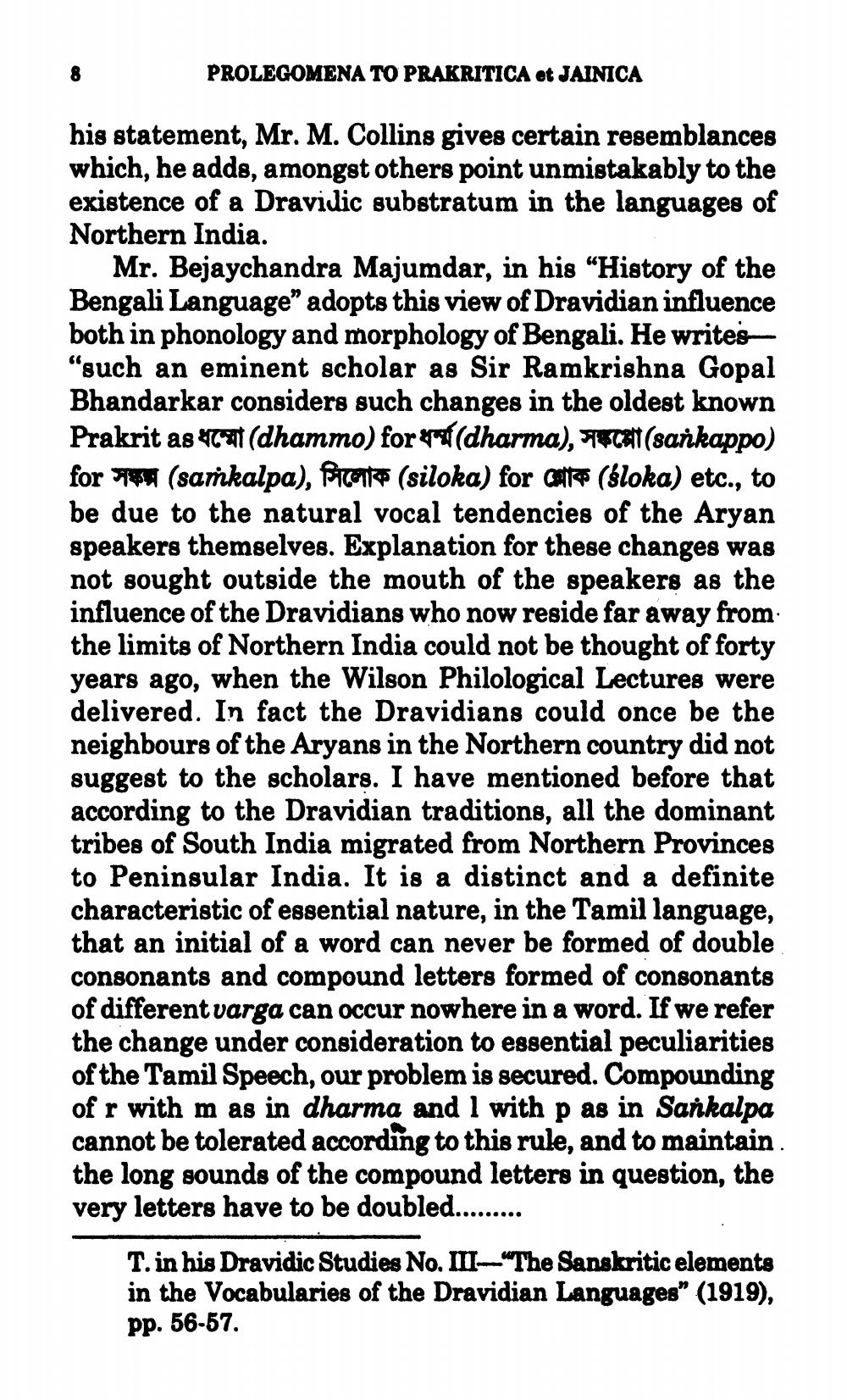________________
PROLEGOMENA TO PRAKRITICA et JAINICA
his statement, Mr. M. Collins gives certain resemblances which, he adds, amongst others point unmistakably to the existence of a Dravidic substratum in the languages of Northern India.
Mr. Bejaychandra Majumdar, in his "History of the Bengali Language" adopts this view of Dravidian influence both in phonology and morphology of Bengali. He writes "such an eminent scholar as Sir Ramkrishna Gopal Bhandarkar considers such changes in the oldest known Prakrit as Cat (dhammo) for 4 (dharma), 7*cat (sankappo) for 574 (samkalpa), ficante (siloka) for CTS (śloka) etc., to be due to the natural vocal tendencies of the Aryan speakers themselves. Explanation for these changes was not sought outside the mouth of the speakers as the influence of the Dravidians who now reside far away from the limits of Northern India could not be thought of forty years ago, when the Wilson Philological Lectures were delivered. In fact the Dravidians could once be the neighbours of the Aryans in the Northern country did not suggest to the scholars. I have mentioned before that according to the Dravidian traditions, all the dominant tribes of South India migrated from Northern Provinces to Peninsular India. It is a distinct and a definite characteristic of essential nature, in the Tamil language, that an initial of a word can never be formed of double consonants and compound letters formed of consonants of different varga can occur nowhere in a word. If we refer the change under consideration to essential peculiarities of the Tamil Speech, our problem is secured. Compounding of r with m as in dharma and I with p as in Sankalpa cannot be tolerated according to this rule, and to maintain. the long sounds of the compound letters in question, the very letters have to be doubled.........
T. in his Dravidic Studies No. III—"The Sanskritic elements in the Vocabularies of the Dravidian Languages" (1919), pp. 56-57.




